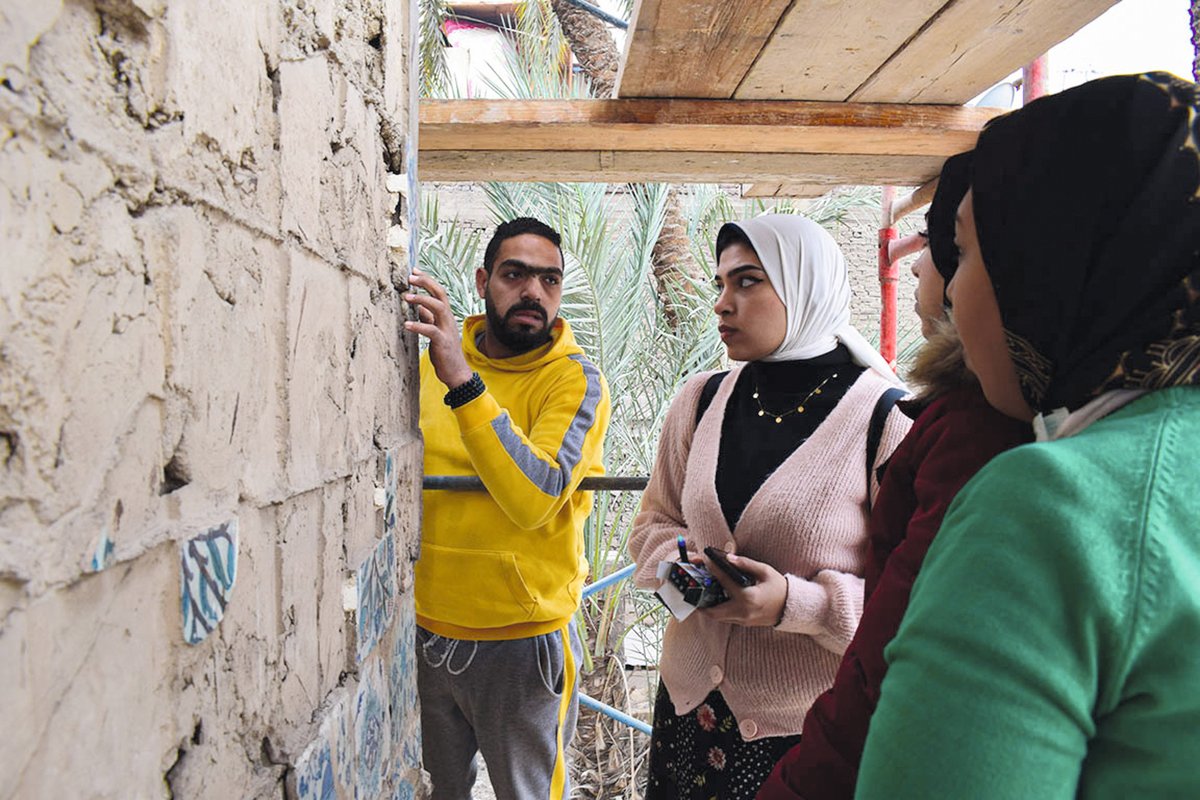The US Department of State’s (DOS) dismantling of foreign aid grants poses severe threats to humanitarian and cultural heritage organisations worldwide. These funding programmes are instrumental in preserving endangered sites and supporting grassroots projects in regions where resources are scarce and, without them, organisations dedicated to cultural conservation face an uncertain future. This could lead to the deterioration of invaluable historical sites, the loss of artefacts and the weakening of international collaboration in heritage protection.
Last month, the New York-based World Monuments Fund (WMF) reported it had received notice that seven US government grants totalling more than $800,000—representing around half of its government funding—would be terminated, affecting projects in Algeria, Benin, Egypt, Equatorial Guinea, Sierra Leone, Ukraine and Iraq.
The organisation has been careful in its wording around the subject so as to not “create a general wave of concern” and has not reported the losses for each grant. “We don’t want our partners on the ground to be too concerned or jump ahead,” Bénédicte de Montlaur, the president and chief executive of WMF, tells The Art Newspaper. “We received a notice of termination and were told it was final, but we can’t know if those grants will be reinstated. We can’t predict the future or what will happen.”
The administration has terminated around 45% of all foreign aid grants, in effect cancelling around 4,000 of its more than 9,000 existing grants
Over the past two decades, the WMF has received 70 grants from the US government totalling more than $25m. The current administration of US President Donald Trump plans to cut around $60bn in foreign aid and has terminated around 45% of all foreign aid grants, in effect cancelling around 4,000 of its more than 9,000 existing grants.
From historic colleges to current war zones
The WMF projects that have been impacted include the restoration of the Old Fourah Bay College in Sierra Leone, the first Western university established in sub-Saharan Africa in 1827. The building was severely dilapidated, having suffered extensive damage during Sierra Leone’s civil war and a fire in 1999. It is one of the few remaining historic landmarks in the capital of Freetown. The WMF has been working on rehabilitating the building for the past four years; the first phase of the project was completed in 2023 and involved engaging the local community and developing a framework for future conservation. When it is completed, it will become a music school for children.
“The Old Fourah Bay College is a symbol of post-conflict reconstruction,” Montlaur says. “It will also change the neighbourhood and give kids opportunities.”
Another project that received a notice of termination is the restoration of Takiyyat Ibrahim al-Gulshani in Cairo, an Ottoman complex built between 1519 and 1524 that included a grand domed mausoleum, residences, a mosque, shops and more. It has suffered from decades of vandalism, natural disasters and the impact of political unrest. In partnership with the Egyptian Ministry of Tourism and Antiquities, the WMF had developed a conservation plan and began restoration efforts in 2018 with a $500,000 grant from the US Ambassadors Fund for Cultural Preservation.
“This project in particular has provided hands-on training for Egyptian conservators and students, ensuring the continuation of heritage expertise in the region,” Montlaur says.
The WMF has also focused on the preservation of cultural heritage in Ukraine, which has suffered widespread destruction since Russia launched its full-scale invasion in February 2022. It initiated the Ukraine Heritage Response Fund in 2022 with an initial $500,000 grant from the Helen Frankenthaler Foundation and has conducted on-site damage assessments in Ukraine’s most heavily affected regions, working with Ukrainian teams to examine more than 600 cultural sites and creating a database of more than 1,400 at-risk sites.
America first, heritage second
The criteria for the termination of each grant is unclear but organisations were informed the grants were reviewed according to the Trump administration’s “America First” directive, which aims to “champion core American interests and put America and American citizens first”, according to the White House.
The Department of State has always been a supporter of heritage because it’s a great tool for cultural diplomacyBénédicte de Montlaur, president, WMF
“The government is reassessing their international affairs and diplomatic priorities,” Montlaur says. “The DOS has always been a supporter of heritage because it’s a great tool for cultural diplomacy. We hope it will continue because we think it definitely serves America’s interests.”
The WMF has launched a call for donations. At the time this publication went to press, it had received $100,000 in support from the Danny Kaye and Sylvia Fine Kaye Foundation and $50,000 in matching funds, in addition to private donations.
Another organisation impacted by the Trump administration’s policy directive is the Geneva-based International Alliance for the Protection of Heritage (Aliph). The organisation partnered with the DOS last year to contribute to the protection of heritage in Ukraine, but was similarly informed last month that its $645,000 grant was terminated. Aliph is investigating how to “continue its support to Ukrainian archives and professionals”, says the organisation’s executive director, Valéry Freland.
“More broadly, in the current international context, it is critical for cultural heritage protection players to work together ever more closely,” Freland adds. “Aliph continues to firmly adhere to its mission, which is ‘action, action, action’. We continue supporting cultural heritage protection projects on the ground.”
The project in Ukraine involved the digitisation of the collections of the State Archival Services of Ukraine to ensure that the country’s history is safeguarded for future generations, and included training for staff in the management of at-risk archival records. Unesco estimates that $3.5bn in damage has been inflicted on more than 1,200 Ukrainian heritage sites related to European, Byzantine and Slavic history across the country, and that nearly $9bn will be required over the next decade.
With support from the Swiss government, Aliph plans to hold a conference in Geneva in May titled “Protecting Heritage: from Crisis to Peace”, which aims to open discussions and forge new partnerships to assist with its ongoing work in Ukraine.
“Agility and responsiveness, two of Aliph’s key assets since our creation, will be needed more and more,” Freland says. “It’s important to strengthen the dialogue between cultural heritage protection actors, and beyond, with other partners from humanitarian, development aid and peace-building fields, to reinforce complementarities and synergies at every level.”



